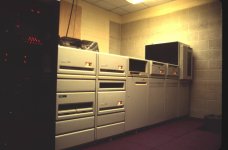Thanks gslick,
Good point about being period-correct - that's just the kind of info I need!
I plan on restoring the RL02 drives, but might actually run the museum display off a Raspberry Pi running a disk emulator of some sort to prevent wear and tear on the drives. I know the standard 11/23 configuration included two RL02 drives, but do you know if it was common to use just one RL02 (probably in conjuction with a floppy)?
The eBay purchase I made included some RD52 drives and, if I remember correctly, an RQDX controller, so I could use that.
Actually, one reason to use the SMD drives might be to take up space in the rack as blank (or any other type) panels are really hard to find.
Thanks,
Steve

